Solder ball
In integrated circuit packaging, a solder ball, also a solder bump (ofter referred to simply as "ball" or "bumps") is a ball of solder that provides the contact between the chip package and the printed circuit board, as well as between stacked packages in multichip modules[1]; in the latter case, they may be referred to as microbumps (μbumps, ubumps), since they are usually significantly smaller than the former. The solder balls can be placed manually or by automated equipment, and are held in place with a tacky flux.[2]
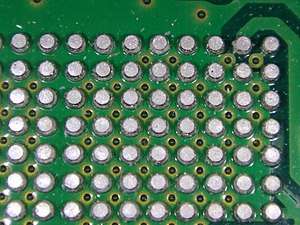
A grid array of solder balls under an integrated circuit chip, with the chip removed; the balls were left attached to the printed circuit board.

A MCM schematic for a stacked DRAM dice showing solder balls
A coined solder ball is a solder ball subject to coining, i.e., flattening to a shape resembling that of a coin, to increase contact reliability.[3]
Usage in flip chip method
 Pads
Pads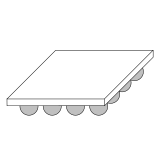 Balls
Balls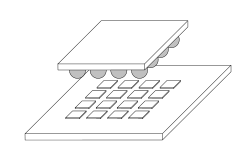 Alignment
Alignment Contact
Contact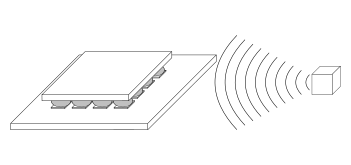 Solder reflow
Solder reflow Adhesive underfill
Adhesive underfill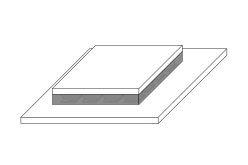 Final result
Final result
See also
- Head-in-pillow defect, a solder ball failure
References
- Definition of: solder ball, PC Magazine glossary
- Soldering 101 - A Basic Overview
- Patent US 7622325 B2, prior art description
This article is issued from Wikipedia. The text is licensed under Creative Commons - Attribution - Sharealike. Additional terms may apply for the media files.